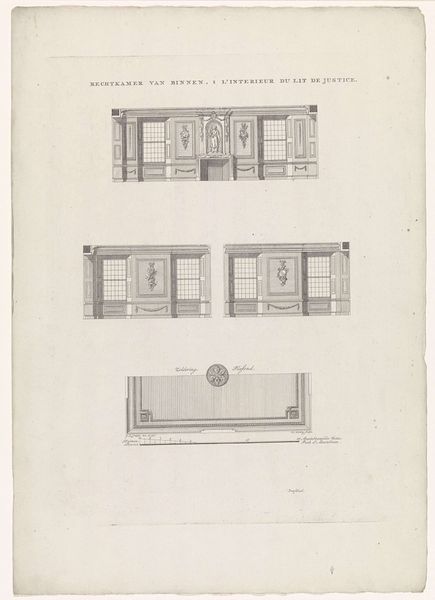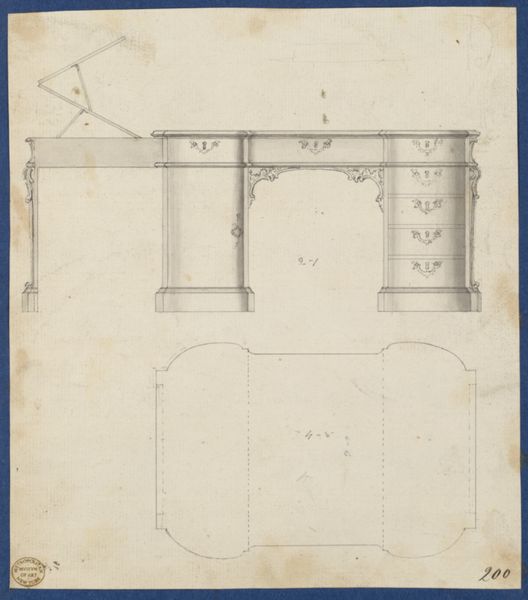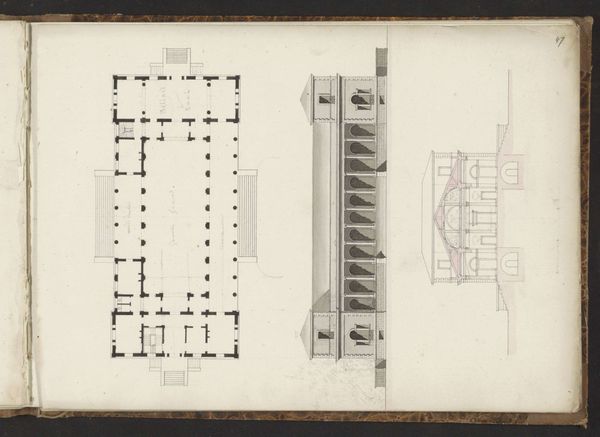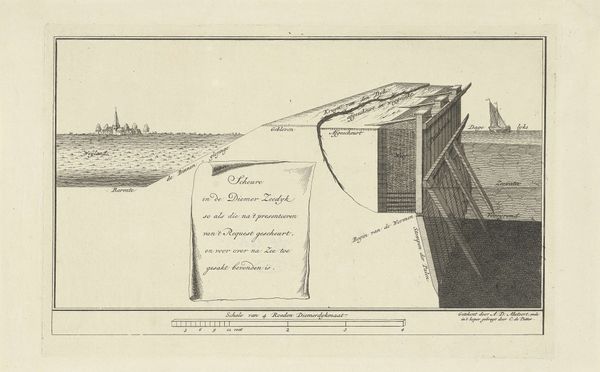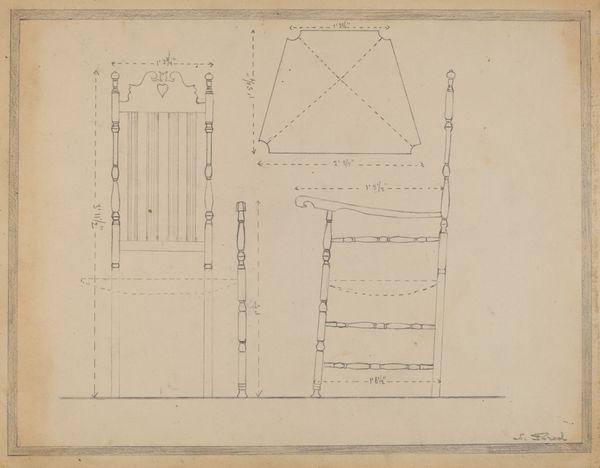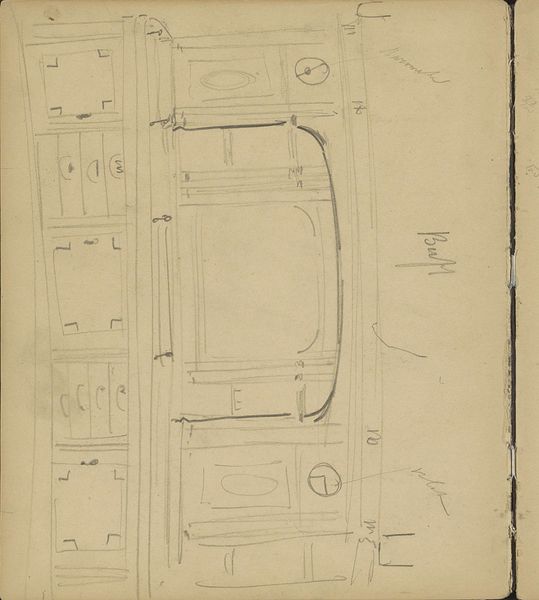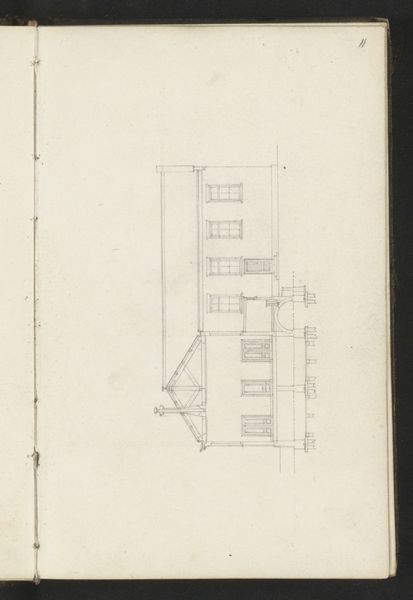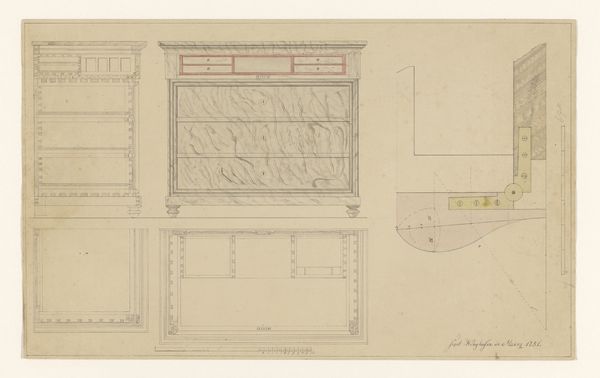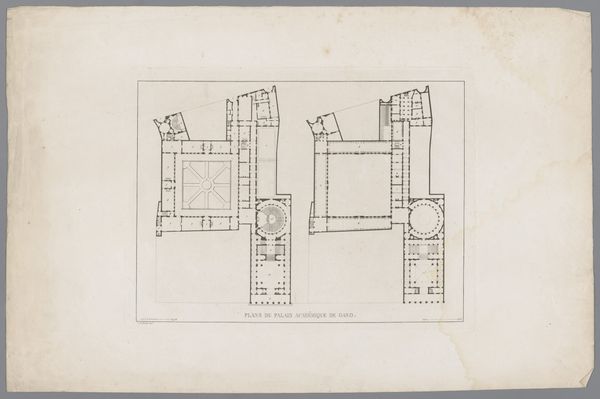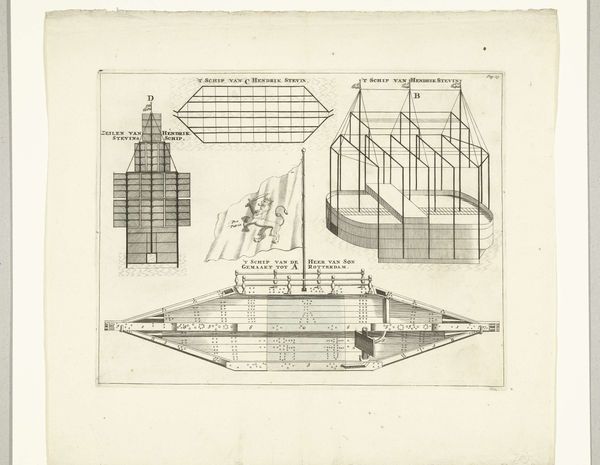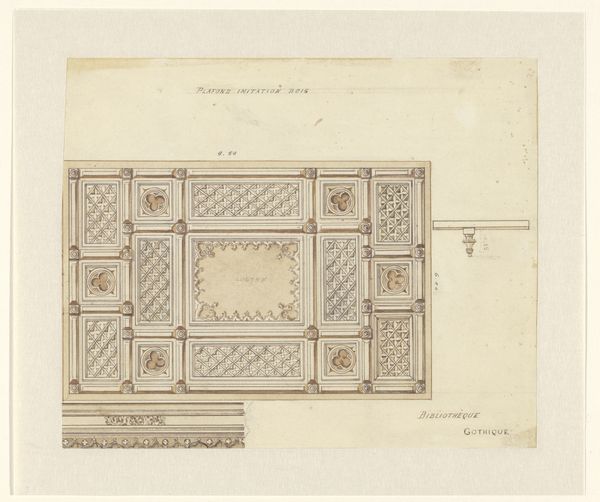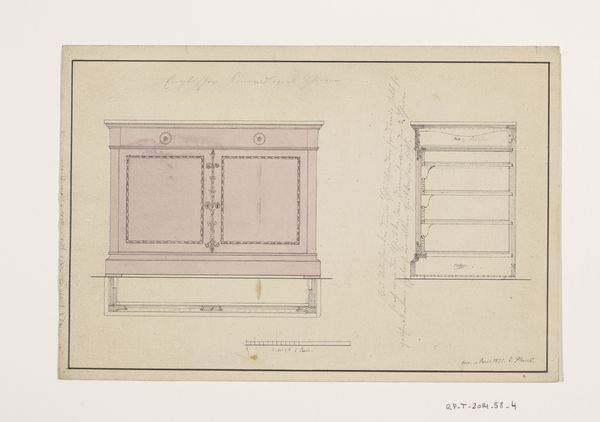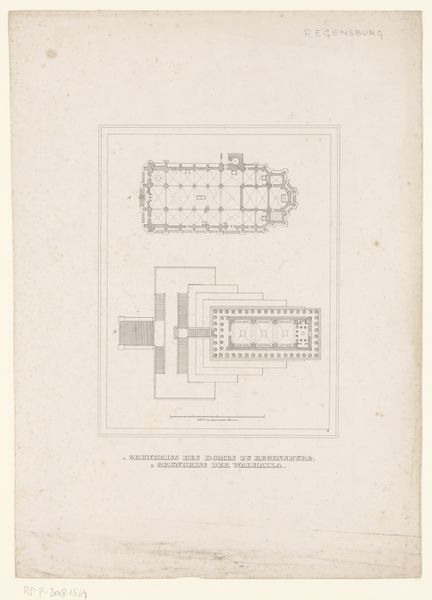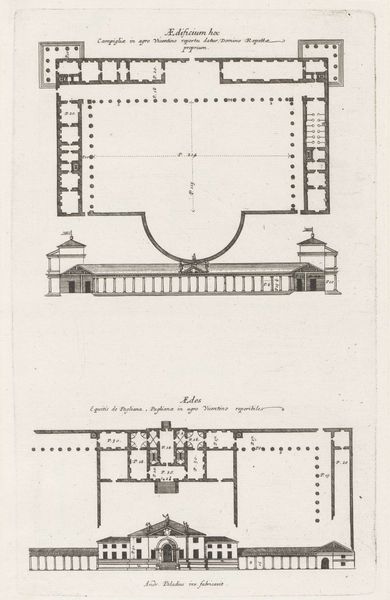
drawing, print, engraving
#
drawing
#
neoclacissism
# print
#
history-painting
#
engraving
Dimensions: height 298 mm, width 187 mm
Copyright: Rijks Museum: Open Domain
Editor: So this is "Table with Music Stands" by de Saint-Morien, made around 1784-1785. It's an engraving and print, and it's fascinating. The drawing depicts both a frontal view and a plan view of a table. What I find striking is the meticulous detail in what seems like a blueprint. How do you interpret this work? Curator: Well, let’s consider it through a materialist lens. This isn’t just an image of a table; it's documentation of a *production process*. The print medium itself suggests replication and dissemination, key to standardizing design. Think about the labor involved – the draftsman, the engraver, the printer. Editor: So you’re focusing on the labor and production of the print, rather than seeing it as purely artistic expression? Curator: Precisely. Consider the context: neoclassicism often aligned with industrializing societies seeking efficiency. The drawing reduces a crafted object into a set of instructions. The measurements, the cutaway views - they’re all about control over the *material world*. It is also breaking the border between high art and craft. Editor: I see… almost like a proto-IKEA instruction manual! Do you think that detracts from its artistic merit? Curator: Not at all! It challenges traditional notions of artistry. We tend to separate “high art” from functional design. But this blurring is potent. It reminds us that art and design, materials, and process are intertwined. Think about the woodworkers, instrument makers, and musicians for whom this design would have served! It invites us to reconsider the relationship between art and commodity culture, consumption and production. Editor: That's given me a completely new perspective on what I thought was a simple drawing. Thanks! Curator: Indeed. Looking beyond the surface can uncover complex dialogues about art, labor, and material culture.
Comments
No comments
Be the first to comment and join the conversation on the ultimate creative platform.
